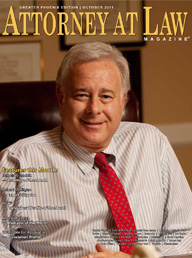First, no mediation is identical to another: participants varyin their interests and/or level of sophistication, and counsel may or may notbe present—the variables are endless. With the foregoing caveat in mind, Ioffer the following example of a voluntary mediation in which I served as themediator. No names are used and all identifying references have been deleted toprotect the confidentiality of the process.The initiating party was a local bank that wanted to submita problematic loan workout with a developer to mediation. Neither party hadfiled an action against the other yet, and the bank hoped the matter could besettled without the need for litigation. The Bank explained that the participantshad reached an impasse over the issue of whether default fees and interestaccrued to date be included in the payoff amount, at which point all offers byboth participants were withdrawn. (As an aside, I wondered if something morewas going on, because waiver of late fees and penalty interest is usually oneof the first claims lenders let go of in work-out negotiations.)Both participants agreed to mediate the issues. Neitherwould be represented by counsel.As a result of pre-mediation interviews with theparticipants and review of the participants’ pre-mediation statements, Ilearned that the parties had agreed to the major terms of the workout,(modified interest rate, extended payment plan, personal guarantee ofborrower’s principal for difference between current appraisal and loan amount,re-issuance of extended coverage lender’s title insurance), but that at thelast minute the bank had raised and stood firm on the issue of default interestand fees. Each participant accused the other of bargaining in bad faith, butwas still willing to give it one last try. Their willingness to mediateindicated to me that there was stillhope for a agreement.The participants arrived on time the day of the mediation.The parties and I had agreed previously to set aside four hours for themediation.As soon as the participants were seated, I got an inkling ofwhat the problem might be. The borrower, an LLC, was represented by themanaging member, (who was the guarantor under the previously proposed settlement).He was tanned and wore a large gold Rolex, golf shirt, golf pants, and loafers.He fit the stereotype of the rich developer to a tee. The bank representativewas the bank’s senior vice president in charge of real estate lending. He wasdressed in a business suit. Both men appeared personable, but avoided eyecontact with each other.Based on a hunch, after the mediator’s opening, I asked the partiesto each tell, in turn, what brought them to the mediation, and also to tell alittle about their personal history—where they were from, where they’d gone toschool, how they came to be in their present occupations. I asked each how thedownturn in the economy had affected their business and personal lives.I hoped the expanded personal information would help undoany stereo-typing and misperceptions.As a clarifying question, the bank representative spoke ofthe stress caused by cost cutting and layoffs and the change of focus from dealmaking to risk control. The developer representative identified with the stressof cost cutting and layoffs, and additionally mentioned the pressure of tryingto maintain a positive, successful image to attract investors so he could stayin business. The bank’s representative agreed, and said sometimes he feltschizophrenic having to bring in business while controlling risk and limitinglosses at the same time.The participants were more relaxed after thesedisclosures, and eventually reached an agreement. The mediation lasted a littleover two hours.















